Who is Ivan Kavaleridze? Art in the grip of Soviet censorship
[ad_1]
He was born on April 13, 137 years ago Ivan Kavaleridze – sculptor, film director, screenwriter, playwright, author of the first film operas in Ukraine. “Universal man” art critics could say if he was born sometime during the Renaissance.
You may know Kavaleridze by the monuments to Princess Olga on Mykhailivska Square in Kyiv, Hryhoriy Skovoroda in the capital’s Podil, or young Taras Shevchenko in Chernihiv.
Life in the Soviet era forced Ivan Kavaleridze to be dual: alongside the understanding of Ukrainian history in his filmography, there were frank “agitators”, and, in addition to Shevchenko and Skovoroda, he designed monuments to Artem and Lenin.
Together with Oleksandra Savenokchief scientist of the Museum-workshop of Ivan Kavaleridze in Kyiv, UP Culture tells about the artist’s innovation and his legacy, his internship in Paris and his rescue of the Kyiv intelligentsia during the German occupation.
Under the patronage of a creative uncle
Ivan Kavaleridze was born on April 13, 1887 in the Ladansky farm in Sumy Oblast in a peasant family. His mother was Ukrainian, his father Georgian. Ivan’s grandfather, Vaso Khvaridze, moved to Ukraine after the end of the Caucasian War in 1864 together with Moscow General Ladonsky. It is rumored that it was the latter who changed the surname Khvaridze to Kavaleridze, so that it would not be difficult to pronounce.
Ivan’s uncle was an archaeologist and artist Serhii Mazaraki, who noticed the boy’s interest in sculpting clay figurines from childhood. Serhiy decides to take his nephew to Kyiv, where the future artist is studying at a private gymnasium.
From an early age, Ivan Kavaleridze was fascinated by sculpture
All-Ukrainian Photocinema Administration
Oleksandra Savenok refers to notes from Kavaleridze’s memoirs: “His aunt and godmother Iulita Lukivna did not want Kavaleridze to become an artist, because of the poverty of her husband Serhiy Arkadyevich Mazaraki, who for her sake gave up his noble family, title, property and earned a living as an artist, amateur archaeologist, head of the Scythian department ethnic groups in the Kyiv Archaeological Museum.
It was Mazaraki, of the whole family, who had the greatest influence on the development of Kavaleridze as an artist: he noticed Kavaleridze’s talent for sculpture when, sitting at the dinner table, he began to sculpt the singing Mephistopheles from the opera “Faust” out of bread.. Mazaraki introduced Kavaleridze to the artistic bohemia of that time. He paid for Kavaleridze’s education at the Kyiv Art School, bought materials for sculpting, until Kavaleridze got a job at the Kyiv Opera Theater.
Internship in Paris
Since 1910, Ivan Kavaleridze was an apprentice in the workshop of a sculptor of Jewish-Lithuanian origin Nahum Aronson in Paris. This study was not long, but European education had its influence on the artist’s practice.
“Every day, Aronson took Kavaleridze through the streets of Paris, telling stories about the sights“, Oleksandra Savenok tells.It was Aronson who taught Kavaleridze the technique of “moving sculpture”, the essence of which was that nature should not be static, but should be able to move freely. Thus, the sculptor could get to know her features and character, reflecting the essence in the sculpture, and not just capturing a portrait of a person, like a photograph.”
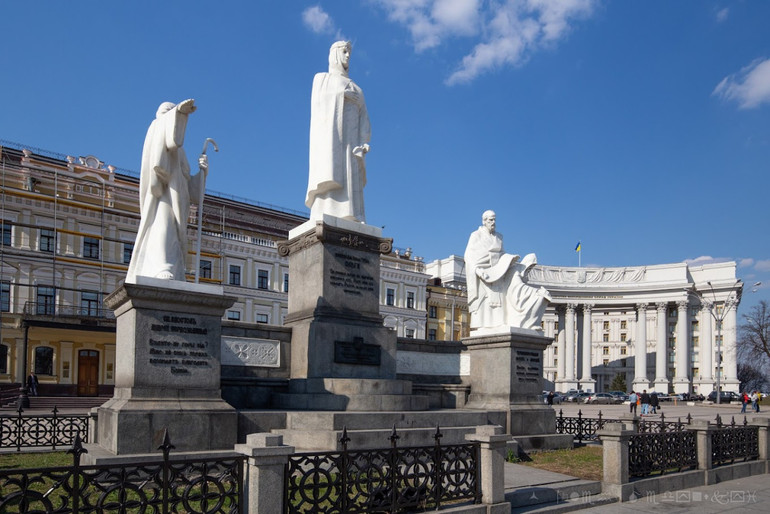
The monument to Princess Olga, the Holy Apostle Andrew the First-Called and the enlighteners Cyril and Methodius was created in 1911
Oleg Medynskyi
In Paris, at the Pantheon cafe, where the entire Parisian bohemian met, Kavaleridze met Oleksandr Arkhipenko, an already famous sculptor at that time. However, Ivan does not dare to approach him, he is shy, because he is not that well-known. At social gatherings, Kavaleridze meets Auguste Rodin, who says that Ivan has talent, but for this he needs to study further. Over time, Kavaleridze visits his workshop.
The art of Soviet power
In total, Ivan Kavaleridze created about 20 monuments during his lifetime. Some of them are still in various cities of Ukraine, some did not materialize or were destroyed by the Bolsheviks, some, on the contrary, were created to satisfy socialist realist demands. For example, the monument to Skovoroda Kavaleridze had to be redone seven times, because there was always something that the Soviet authorities did not like.
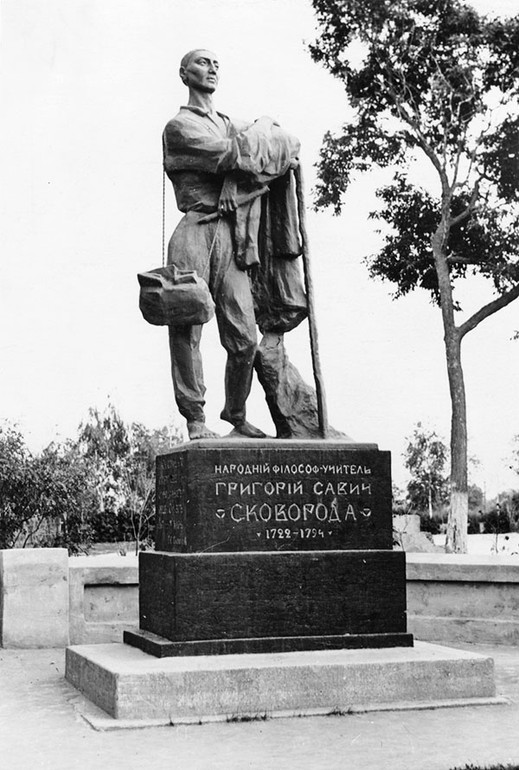
Monument to Hryhoriy Skovoroda in Lokhvytsa
Encyclopedia of Modern Ukraine
“Unfortunately, there were many similar cases. As in the situation with the monument to Shevchenko in Dubno. The idea of this monument came to Kavaleridze during the height of the war in the 41st year, when he promised the young leaders of the Dubno district to create a monument for the city monument to Kobzar. The project was ready in 1942-43, but it was not destined to happen. With the return of the Soviets, the monuments did not go well.
Kavaleridze was offered to participate with this project in the competition for a monument to Shevchenko for Khreshchatyk. But the authorities kept it under control – the project was eliminated from the competition.
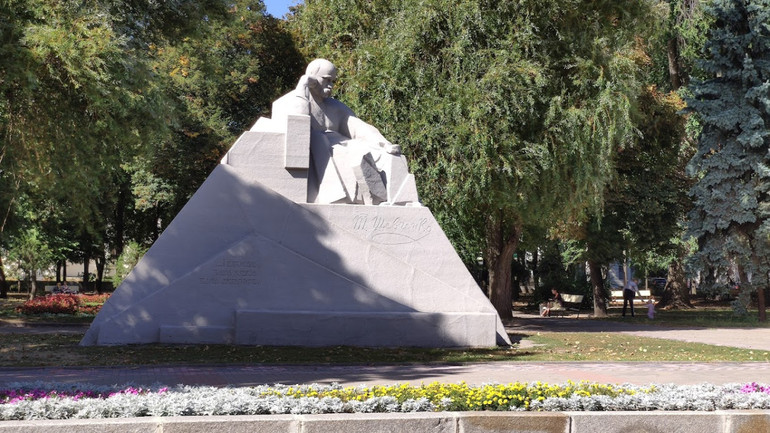
Monument to Taras Shevchenko in Poltava
Serhii Tykhevich
Time passed. The Ukrainian diaspora received permission to erect a monument to Shevchenko in Washington, at the same time in Muscovy suddenly realized that they also urgently needed a monument to Kobzarev. The victory was won by a work that was too reminiscent of Kavaleridzivskyi Shevchenko.
When the competition envelopes were opened, it turned out that the authors were three young sculptors. The members of the jury of the competition kept silent about the plagiarism, of course, because Kavaleridze was under the notorious “cap”. The monument still stands near the Ukraina Hotel, and we have documentary footage of how Kavaleridze helped these guys and advised them.”
Sculpture in cinema
In the 1920s and 1930s, Ivan Kavaleridze worked at the Odesa Film Factory and later at the Kyiv Feature Film Studio. Kavaleridze made all his films in monochrome and preferred pavilion shootings, because they allowed him to experiment with light and shadow, with scenery.
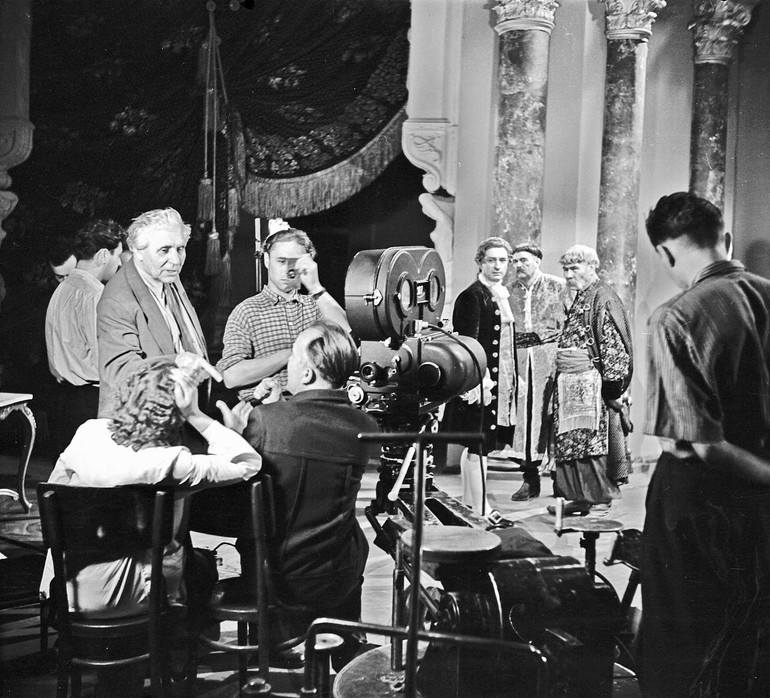
Making films at the Odesa Film Studio
All-Ukrainian Photocinema Administration
In 1935, he made the film “Prometheus”, which was mercilessly criticized in the newspaper “Pravda” on the instructions of Stalin. The artist is accused of “anti-historicism”, forbidding him to work with young people and create films that make sense of the past. This did not stop Kavaleridze, and instead of shooting, he turned to another genre, creating the first Ukrainian film operas – “Natalka Poltavka” (1936) and “Zaporozhets za Danube” (1937).
Kavaleridze transfers many of the principles of sculpture creation to cinema. For example, static, sequential shots, mastery of composition, frame plasticity, play of light and shadow.
Oleksandra Savenok adds: “Cinema gave Kavaleridze the opportunity to realize his sculptural ideas in dynamics: his films are distinguished by a clear composition, expressive mise-en-scenes and expressive acting. An example of this is the silent film “The Downpour” (1929) – although it is still considered lost, the frames that visually give to understand how Kavaleridze skillfully uses sculptural experience to create dynamic frames”.One of the iconic films in Kavaleridze’s work is “Prostitute” from 1961, based on the novel of the same name by Panas Myrny.
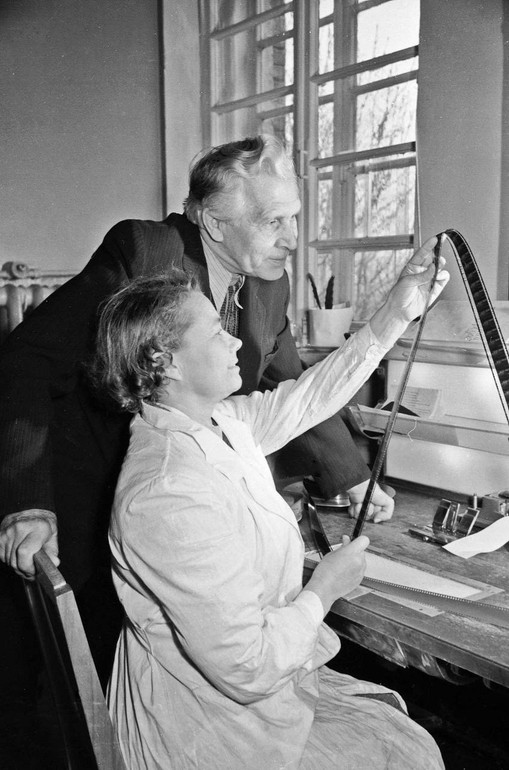
Kavaleridze transfers many of the principles of sculpture creation to cinema.
All-Ukrainian Photocinema Administration
Salvation of artists
During the German occupation of Kyiv, the local intelligentsia organized the “Society of Artists”, which saved people from deportation to Germany, preserved cultural values (books, paintings, sculptures), and protected art workshops from looting. After returning to the city, Ivan Kavaleridze joins the work of the Society.
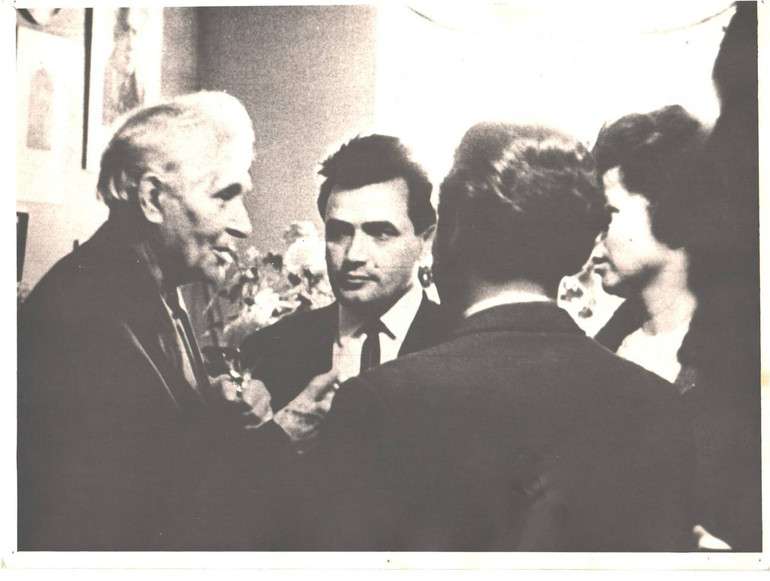
Kavaleridze rescues imprisoned Ukrainian artists, provides shelter to Jewish families, and supports the Kyiv intelligentsia.
All-Ukrainian Photocinema Administration
Subsequently, this gives the artist the opportunity to head the culture department of the Kyiv city administration. It was in this position that Kavaleridze rescued imprisoned Ukrainian artists, provided shelter to Jewish families, and supported the Kyiv intelligentsia.
“Kavaleridze and his comrades hid people in the basement under the shooting pavilion of the film studio (now the Dovzhenka film studio). According to him, the number of rescued people reached a thousand people. About the last days of the occupation, Kavaleridze recalls that he had to hide so that he would not be taken to Germany. He was informed about the possible danger by a friend who had connections with the partisans. Thanks to an acquaintance with a former studio accountant who worked in the pharmacy management, Ivan also supplied the partisans with medicines and dressing materials. Basically, Kavaleridze had his own people everywhere, whom he helped, and they helped him.” – stresses Oleksandra.
Condescension to the Soviet government
On the one hand, Ivan Kavaleridze is the author of monuments to Shevchenko, Princess Olga, Grigory Skovorod, on the other – to Artem in Bakhmut and Sviatohirsk, to Lenin in Shostka. Sviatohirskyi Artem is the highest sculpture in Donetsk region, and despite the short-term occupation of the place by the Russians, the constant threat of shelling, decommunization, it continues to rise on the cliffs of Siverskyi Donets.
In order to continue creating in Soviet times, Kavaleridze had to make compromises, glorifying Soviet heroes, the working class and socialism.Oleksandra Savenok comments on his creation of the monument to Artem in Bakhmut: “Of course, one cannot deny Kavaleridze’s naïve faith in the ideals of socialism at that time. He believed that with his art he was contributing to the creation of a new “just society”. To design the monument to Artyom in Bakhmut, Kavaleridze was inspired by the works of the Belgian sculptor and artist Konstantin Meunier.

“Monument to Artem” monument on Lysia Gora, on the right bank of the Siverskyi Donets River
Radio Svoboda
He writes about this in his memoirs, where he mentions how the “Labour Monument” is strongly connected with industrial Belgium. By the way, Kavaleridze was not satisfied with the monument to Artyom in Bakhmut, he wrote that the final result gave him chills, and he should return to the images of Shevchenko, Skovoroda and others. The monument was destroyed by the German occupiers, and the authorities did not want to restore it, accusing Kavaleridze of formalism. In addition, in such a mood, the Soviet leadership also destroyed the Sumy monument to Shevchenko”.
In the future, in sculpture, Ivan Kavaleridze did not return to Soviet narratives, but, on the contrary, delved more into Ukrainian themes.
Legacy of Kavaleridze
Ivan Kavaleridze died on December 3, 1978. Now his works are stored in the National Art Museum, Kyiv Art Gallery, Museum of Prominent Figures of Ukrainian Culture, Museum of Theater, Music and Film Arts of Ukraine, Literary and Memorial Museum of P.G. Tychyna, Maxim Rylskyi Memorial Museum, Odesa National Art Museum, Sumy Regional Art Museum, as well as in private collections around the world.Some monuments authored by Kavaleridze are now located in the front-line territories.
“The monument to Artem in Sviatohirsk stands intact, we know that there was a point on his head for our snipers when they defended the city.” Oleksandra shares. “There is also a monument to Bohdan Khmelnytskyi in Nikopol, most likely the authorship of Kavaleridze, which is also intact.”. After his death, Ivan Kavaleridze left his memoirs. Despite this, there are many white spots in his biography that still need to be explored.
[ad_2]
Original Source Link











